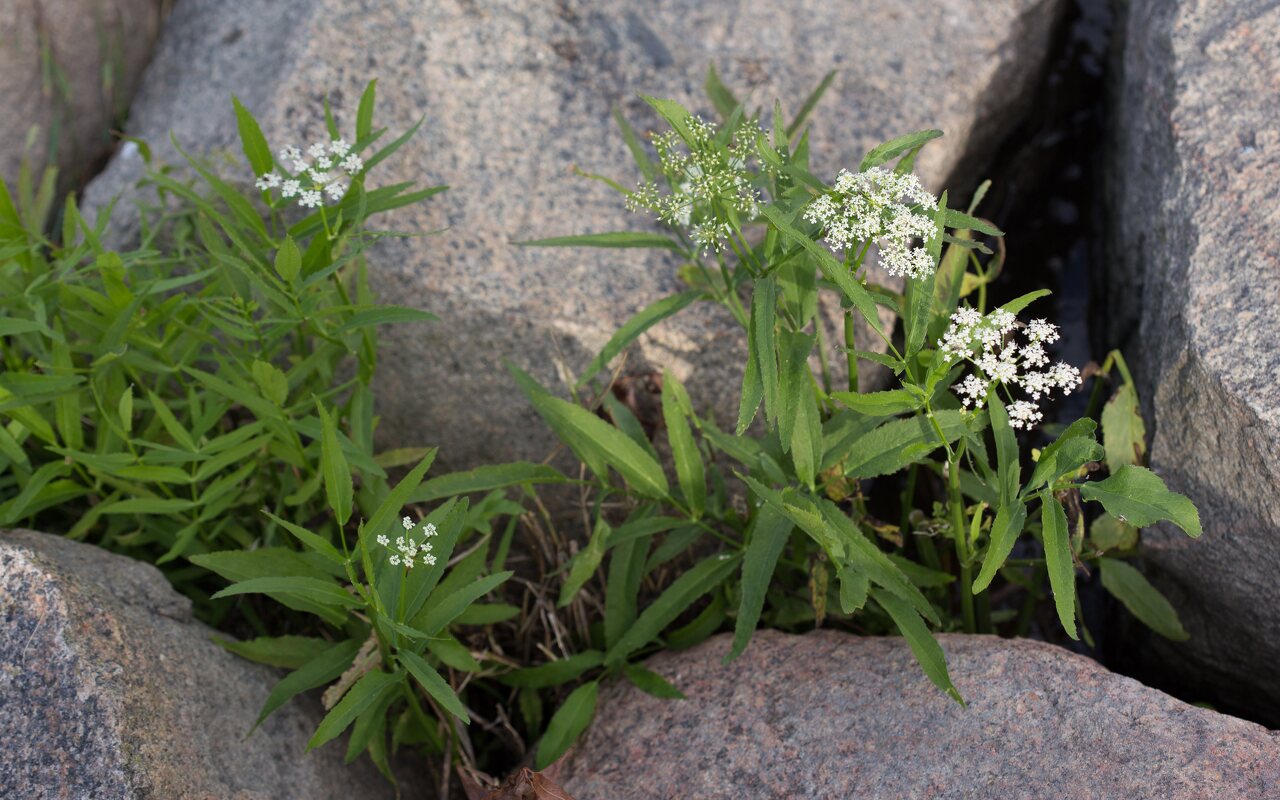
Sium latifolium · plačialapė drėgmenė
- great water-parsnip, greater water-parsnip, wideleaf waterparsnip
- Breitblättrige Merk, Große Merk
- plačialapė drėgmenė, datanas, lanteklis, morkus
- platlapu cemere
- marek szerokolistny
It is native to much of Europe, Kazakhstan, and Siberia. This plant grows in wet habitat such as swamps and lakeshores, sometimes in the water. It is a perennial herb with a hollow, grooved stem up to 2 m tall. The herbage is green and hairless. The leaves are up to 30 cm long with blades borne on hollow petioles that clasp the stem at their bases. The inflorescence is an umbel of white flowers.
The rootstock is acrid and poisonous, but the leaves have been cooked and eaten as a vegetable in Italy and the ripe seeds - which are aromatic due to their limonene content - have been used (in small quantities) as a spice or seasoning in Scandinavian cuisine.
Auga upių senvagių, ežerų, balų pakraščiuose, pelkėse, grioviuose. Dažna visoje Lietuvoje. Šaknys nuodingos.
‥
0 comments
Add a comment